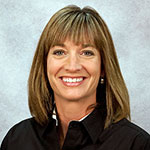Make Every Bite Count is the theme of the current dietary guidelines for Americans (2020-2025), and "make every bite count" is a perfect theme for older adults! Older adults have changing dietary needs and are at a heightened risk of malnutrition as they age. They do have lower calorie needs but they also have similar or even increased nutrient needs compared to younger adults. So, nutrient-dense foods are needed to provide a nutrition punch in smaller amounts of food for older adults, especially in senior living settings. And that's where small plates can be a big benefit!
Many times, seniors will complain of receiving too much food. As a result, large meals can cause them to feel overwhelmed and in turn cause them to eat less.
One strategy used for older adults with smaller appetites is to provide small plates of food. Serving five to six smaller meals is a common way to help older adults enjoy their meals and maintain their nutritional status.
If you are serving seniors, you might also consider a check of your portion sizes. Oftentimes, we end up serving more than they actually need based on the menu or guidelines recommended for them. Are you heaping the food over and above the serving utensil? It could be doing more harm than good! Many residents have the mindset that they need to finish or clean their plate, and this is more reasonable and doable if they receive a small plate with small portions of food.
Make sure you are packing those small plates with nutrient-dense food! Here are some examples of nutrient-dense foods:
- Peanut butter
- Eggs
- Avocado
- Greek Yogurt
- Smoothies
- Salmon
- Potatoes
- Berries
- Whole Grains
- Beans
- Lentils
So, focus on providing nutrient-dense food and serving small plates, and you can help your seniors make every bite count!
Looking for more information? Here's a great article from the U.S. Department of Health and Human Services called "Nutrition as We Age: Healthy Eating with the Dietary Guidelines"!






